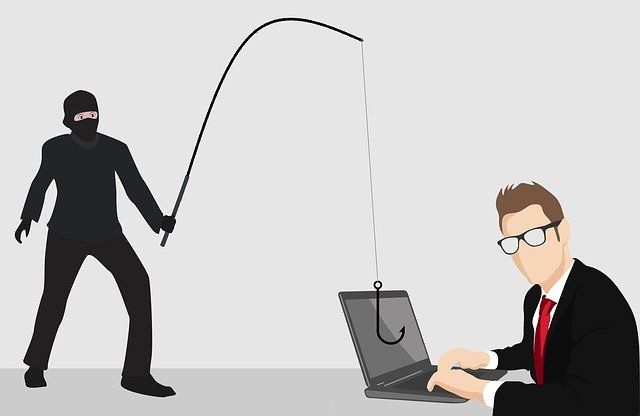How to Identify a Phishing Email

Whenever you want to click a link or respond with your personal information to an email, pause and ask yourself these two questions:
Is this email genuine?
Is it absolutely necessary that I respond to this email?
Bad players are taking advantage of internet anonymity to steal people’s identity and data. Just clicking an innocent-looking link in your email can cost your business money and reputation.
No thanks to an attack method known as email phishing, hackers can impersonate legitimate services to steal user’s data and sensitive information with ease.
What are Phishing Emails?
Phishing emails are scam emails which cybercriminals use in deceiving a target to comply with a specific request such as filling out a web form or supplying sensitive personal or business information.
If successful, the attacker can use the stolen information such as account numbers, social security number, and more to assume your identity and make financial and business transactions on your behalf.
Features of a Phishing Email
No matter how clever a phishing email is designed, there are some signs that can expose it as one. These types of phishing include:
Ridiculous Offers: If an email offer makes you feel like the luckiest human alive, chances are that it is a scam. You shouldn’t expect to win a lottery when you never played one in the first place. If an offer is too good to be true, avoid it and report as spam.
Threatening Tone: Many phishing emails rely on basic human fear such as the fear of missing out or the fear of consequences. This type of email can include phrases such as “Click here to avoid deactivation” or “Last Chance”. These messages are designed to prevent you from critically examining the hacker’s request.
Generic Receiver and Sender: Many phishing emails are blasted out in large numbers, so the attackers don’t bother to personalize them. Salutations such as “Dear Customer” instead of “Dear John” should be suspect. Also, when a sender detail is unspecified or deliberately hidden, the email is likely to be for phishing.
How to Spot Phishing Emails
Some useful phishing email spotting methods are discussed below:
Poorly timed or inappropriate: You should be suspicious of any email that gets your basic info wrong. For example, an email thanking you as a new member when you have been a long-time user of a particular service should be scrutinized. It is likely to be part of a mass spamming and phishing attempt.
Poor Grammar and Spelling: An email from a supposed bank which is filled with grammatical errors is likely to be from a phisher. Carefully read all important emails before responding to their requests. An official email should be written in professional and error-free grammar, otherwise, ignore it as this could be a phishing scam.
Verify Email Links: Cybercriminals can encode a fake URL to hide its originating source. If you hover over a link and an unknown and lengthy random address pop up, then it is from a phisher. Careful attackers may purchase a similar looking address such as “https://www.jpmorganch e se.com/” instead of “https://www.jpmorganch a se.com/” to fool victims. So, be aware of URL misspelling as well.
How to Protect Your Business from Phishing Emails
Prioritize Security Awareness Training: Train your employees to recognize phishing emails. An untrained employee is a potential backdoor to your organization’s security.
Install Anti-Phishing Tools: Popular browsers have built-in tools or add-ons for detecting harmful websites or clones. These tools can block fake websites and alert users. Install or enable relevant browser security tools on all your computers.
Follow Your Browsing Routine: If you must authorize a request in response to an email, manually type out the web address or use your favorite search engine. This way, you can protect yourself if the email was fake or update the required information in case of a genuine request.
Email Filtering Solutions: You cannot be too careful with phishing emails. A good companion to human alertness is email filtering solutions which are able to detect spam email and block them.
Safeguard your Personal Information: Your personal information should not be sent out over the internet. Instead, opt for physical contact and a second confirmation before taking any action.
Install Firewall and Antivirus: Firewall blocks unauthorized connection to your system. Some antivirus can scan attachments right from your inbox so that harmful programs are prevented from running. They are also effective in preventing more specific scams such as spear phishing attacks.
Final thoughts…
Attackers are coming up with novel phishing techniques. But they also rely on you being an easy target. Cyber security awareness, email vigilance, and relevant security tools can help keep your business safe from email phishing attacks.
If you feel you may be facing an email phishing attack, please feel free to contact one of our SDTEK team members, we’d be happy to help.
The post How to Identify a Phishing Email appeared first on SDTEK | San Diego, CA.


